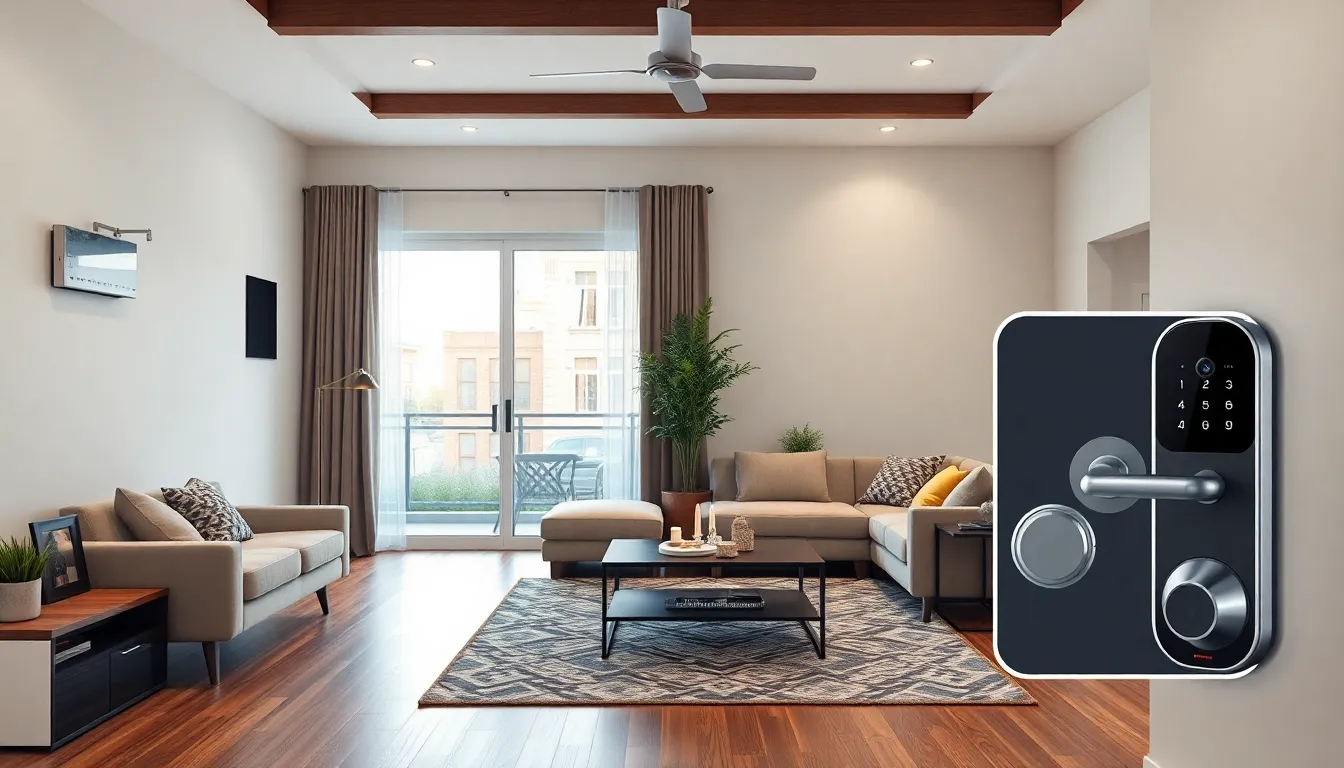Table of Contents
ToggleIn an age where home safety is a top priority, integrated home security systems have emerged as a game-changer. These advanced solutions combine various security components into a cohesive system, offering homeowners peace of mind like never before. With features such as smart cameras, motion sensors, and remote monitoring, it’s easier than ever to protect what matters most.
As technology evolves, so do the methods of safeguarding homes. Integrated systems not only enhance security but also streamline daily living. Homeowners can manage everything from lighting to alarms through a single app, making their lives more convenient and secure. Understanding the benefits and options available can empower anyone to make informed decisions about their home security.
Overview Of Integrated Home Security
Integrated home security systems offer comprehensive solutions to enhance residential safety. These systems combine multiple security features, including smart cameras, motion sensors, alarm systems, and access control, into one cohesive unit. This integration allows homeowners to monitor and control their security devices easily.
Home automation enhances the functionality of integrated security systems. Lights, thermostats, and doors can interact with security features, providing a seamless user experience. Homeowners benefit from real-time alerts on their smartphones, ensuring immediate awareness of any suspicious activity.
The convenience of managing security through a single app simplifies daily routines. Users can check camera feeds, receive notifications, and control locks from anywhere. According to a report by the Consumer Technology Association, integrated security systems have seen adoption rates increase by 22% over the past two years.
Cost considerations play a vital role in choosing integrated systems. While initial expenses may be higher, long-term savings emerge through energy efficiency features and reduced insurance premiums. Many insurers offer discounts for homes equipped with comprehensive security systems.
In addition, the ability to customize integrated home security solutions addresses individual needs. Homeowners can select specific components and services that align with their lifestyles and budgets, ensuring a tailored security experience.
Key Components Of Integrated Home Security

Integrated home security systems include vital components that work together, creating a comprehensive safety network. Key elements encompass alarm systems, surveillance cameras, and smart lock systems, each contributing to enhanced security.
Alarm Systems
Alarm systems form the backbone of integrated home security. These systems detect unauthorized entry through door and window sensors. Advanced alarm systems integrate with mobile devices, sending instant alerts upon detection of suspicious activity, allowing homeowners to respond promptly. Features like cellular connectivity ensure reliability during internet outages. Incorporating smart technology enables the automation of alerts and notifications, increasing overall effectiveness.
Surveillance Cameras
Surveillance cameras are essential for monitoring and recording activity around the home. High-definition cameras capture clear video footage, while night vision capabilities ensure visibility in low light conditions. Many systems use motion detection technology, which activates recording only when movement occurs, conserving storage space. Remote viewing options provide homeowners with real-time access to camera feeds via smartphones or tablets. Systems with cloud storage allow for easy retrieval of recorded data, facilitating investigations when necessary.
Smart Lock Systems
Smart lock systems enhance physical security by offering keyless entry and remote locking capabilities. These locks allow homeowners to grant temporary or permanent access to others, ideal for visitors or service personnel. Integration with home automation systems enables users to lock or unlock doors remotely, monitor access logs, and receive notifications upon door usage. Some smart locks feature fingerprint recognition or touchscreen interfaces, adding layers of security and convenience.
Benefits Of Integrated Home Security
Integrated home security systems offer numerous advantages that enhance safety and convenience. These systems provide homeowners with a comprehensive approach to security, ensuring a safer living environment.
Increased Safety
Increased safety is a primary benefit of integrated home security systems. Alarm systems detect unauthorized entry, sending instant alerts to homeowners. Surveillance cameras monitor and record activities, deterring potential intruders. With both features working together, a home’s overall security is significantly strengthened, minimizing the risk of break-ins. Additionally, many integrated systems feature motion sensors that trigger alarms or notifications when movement is detected in designated areas.
Remote Monitoring
Remote monitoring facilitates real-time oversight of home security. Homeowners access security feeds from smart devices, enabling them to check on their properties anytime, anywhere. This capability offers peace of mind, particularly during travel or extended absences. Many systems also provide customizable alerts, allowing homeowners to receive notifications for specific events, such as triggered alarms or unusual activity captured by cameras.
Home Automation Integration
Home automation integration enhances the functionality of security systems. These systems interact seamlessly with other smart home devices, such as lights, thermostats, and smart locks. Homeowners can create automated routines, like turning on exterior lights when an alarm is triggered or adjusting the thermostat when they leave home. This not only increases security but also optimizes energy use, supporting both cost savings and environmental sustainability.
Challenges In Implementing Integrated Home Security
Integrated home security systems face various challenges during implementation. These obstacles can affect cost, effectiveness, and user satisfaction.
Cost Considerations
Initial costs for integrated home security systems can be high, often deterring some homeowners. Prices for equipment, installation, and subscription services add up quickly. Research by the Security Industry Association indicates that comprehensive systems can range from $500 to over $2,000, depending on features. Long-term expenses may arise from maintenance, updates, and potential equipment replacements. Some homeowners may find these costs burdensome despite potential savings from reduced insurance premiums and energy efficiency benefits.
Technical Compatibility
Technical compatibility poses a significant hurdle for integrated home security systems. Not all devices communicate seamlessly, leading to potential inefficiencies. Homeowners may encounter issues with older devices or incompatible brands, complicating the integration process. A study by the Consumer Technology Association reported that nearly 30% of consumers face difficulties in connecting different security components. To ensure effective integration, choosing products that adhere to universal communication standards is crucial. This approach minimizes compatibility issues and provides a more cohesive security experience.
Integrated home security systems offer a comprehensive solution for those looking to enhance their safety and convenience. By combining various security features into a single platform homeowners can enjoy seamless monitoring and control. This integration not only improves security but also streamlines daily routines making life easier.
While initial costs may be a concern the long-term benefits often outweigh these expenses. Customization options allow homeowners to tailor their systems to fit their specific needs and budgets. As adoption rates continue to rise more individuals are recognizing the value of these advanced security solutions. Investing in integrated home security is a proactive step toward ensuring peace of mind and protecting what matters most.





